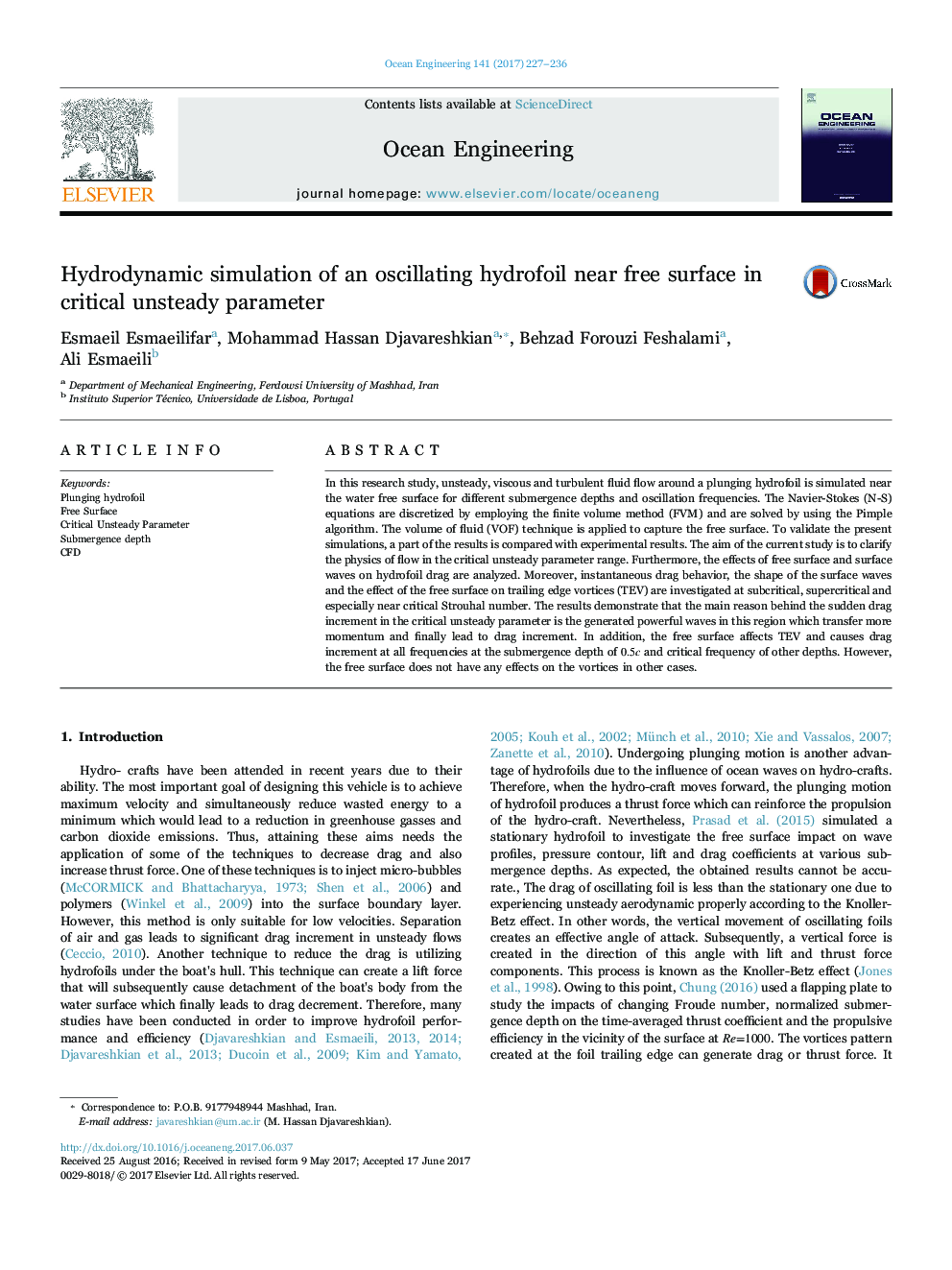| Article ID | Journal | Published Year | Pages | File Type |
|---|---|---|---|---|
| 5474425 | Ocean Engineering | 2017 | 10 Pages |
Abstract
In this research study, unsteady, viscous and turbulent fluid flow around a plunging hydrofoil is simulated near the water free surface for different submergence depths and oscillation frequencies. The Navier-Stokes (N-S) equations are discretized by employing the finite volume method (FVM) and are solved by using the Pimple algorithm. The volume of fluid (VOF) technique is applied to capture the free surface. To validate the present simulations, a part of the results is compared with experimental results. The aim of the current study is to clarify the physics of flow in the critical unsteady parameter range. Furthermore, the effects of free surface and surface waves on hydrofoil drag are analyzed. Moreover, instantaneous drag behavior, the shape of the surface waves and the effect of the free surface on trailing edge vortices (TEV) are investigated at subcritical, supercritical and especially near critical Strouhal number. The results demonstrate that the main reason behind the sudden drag increment in the critical unsteady parameter is the generated powerful waves in this region which transfer more momentum and finally lead to drag increment. In addition, the free surface affects TEV and causes drag increment at all frequencies at the submergence depth of 0.5c and critical frequency of other depths. However, the free surface does not have any effects on the vortices in other cases.
Keywords
Related Topics
Physical Sciences and Engineering
Engineering
Ocean Engineering
Authors
Esmaeil Esmaeilifar, Mohammad Hassan Djavareshkian, Behzad Forouzi Feshalami, Ali Esmaeili,
